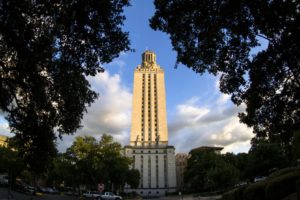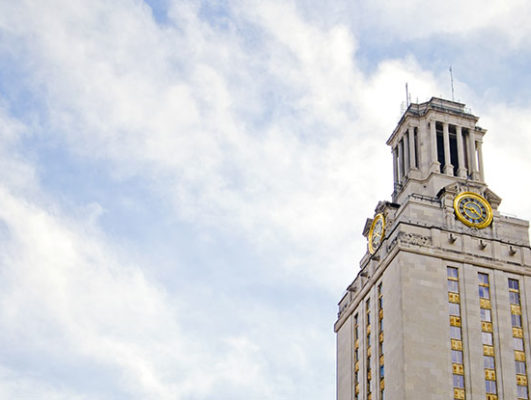There aren’t many universities with their own skyscraper. So why does Texas have one, and what was it built for?
For more than 80 years, the UT Tower has been the academic symbol and architectural emblem of The University of Texas at Austin. The 307-foot-tall Tower was completed in 1937. Its neo-classical style is Beaux-Arts, named for the influential Parisian school that produced its architect, Paul Cret. It also incorporates elements of Spanish colonial revival, such as its red tile roof. For many years, the Tower was the tallest building in Austin. Today, it ranks 27th.
The Tower is a commanding symbol of pride on the Austin skyline, especially at night. From its beginning, the Tower has been bathed in a combination of orange and white light to celebrate academic honors and sport victories. Its windows can be used to form numbers, such as “1” for national championships, the number on a Heisman winner’s jersey, or the last two digits of a class’s graduating year. There are many lighting configurations. Most commonly used, the top glows orange to commemorate regular-season victories or a conference title in any intercollegiate sport, and it stands dark on somber occasions.
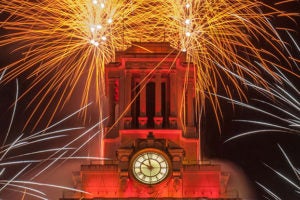
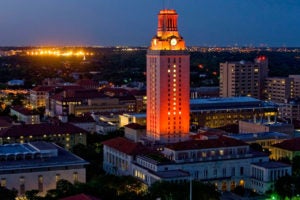
The Main Building and its tower were originally designed to serve as the campus central library. The library’s book collections were cataloged throughout the impressive 27 floors of the Tower. To access them, students browsed card catalogs on the second floor in what is now the Life Sciences Library, then submitted their request at the main desk. Up above, librarians were stationed on every other floor. They would roller skate to retrieve requested books and send them down to the desk via dumbwaiter to the students below.
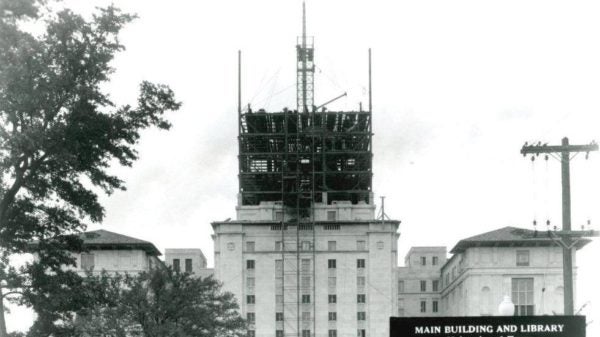
In 1973, the President’s Office was moved from the first floor to the fourth floor, which had housed the rare books collection. The rooftop patio outside the President’s Office provides stunning views of the campus, surpassed only by the view from the top of the Tower, the Observation Deck, which can be visited on scheduled “Tower Tours” run by the Texas Union.
In recent years, the Main Building has been renewed as space for students. Within the atrium of the Life Sciences Library, freshmen now attend classes in small seminar rooms.
Above the Observation Deck are the bells of the Knicker Carillon, which ring on the quarter hour. With 56 bells, the carillon is the largest and heaviest in Texas, with the low B flat 2 bell weighing in at 7,350 pounds and the high G7 a mere 20 pounds. The carillon is played by hand most weekdays at noon by students of the Butler School of Music. Their melodies can be heard across the main campus. Listen for the state song, “Texas, Our Texas,” every morning at 8.
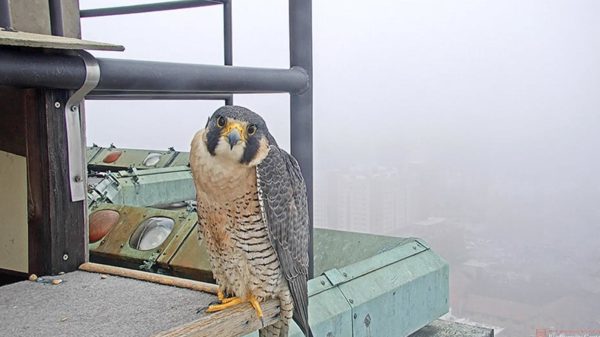
And above the carillon is one final sight to behold, but you’ll need binoculars. The building’s very top is home to a peregrine falcon, nicknamed “Tower Girl.” She is the — ahem — apex predator of the Forty Acres. Tower Girl lives in Austin year round, and this fastest of all animals on Earth can be seen dive-bombing unfortunate grackles, pigeons and other prey. If you don’t have binoculars, you can still watch a live video feed of her roost on the roof, a nesting box where each spring she does her part to increase the population of these iconic raptors.
From all points of campus, the Tower stands proud as a symbol of the audacious goals that have made the university great. In the words of architect Paul Cret, it is “the image carried in our memory when we think of the place.”

